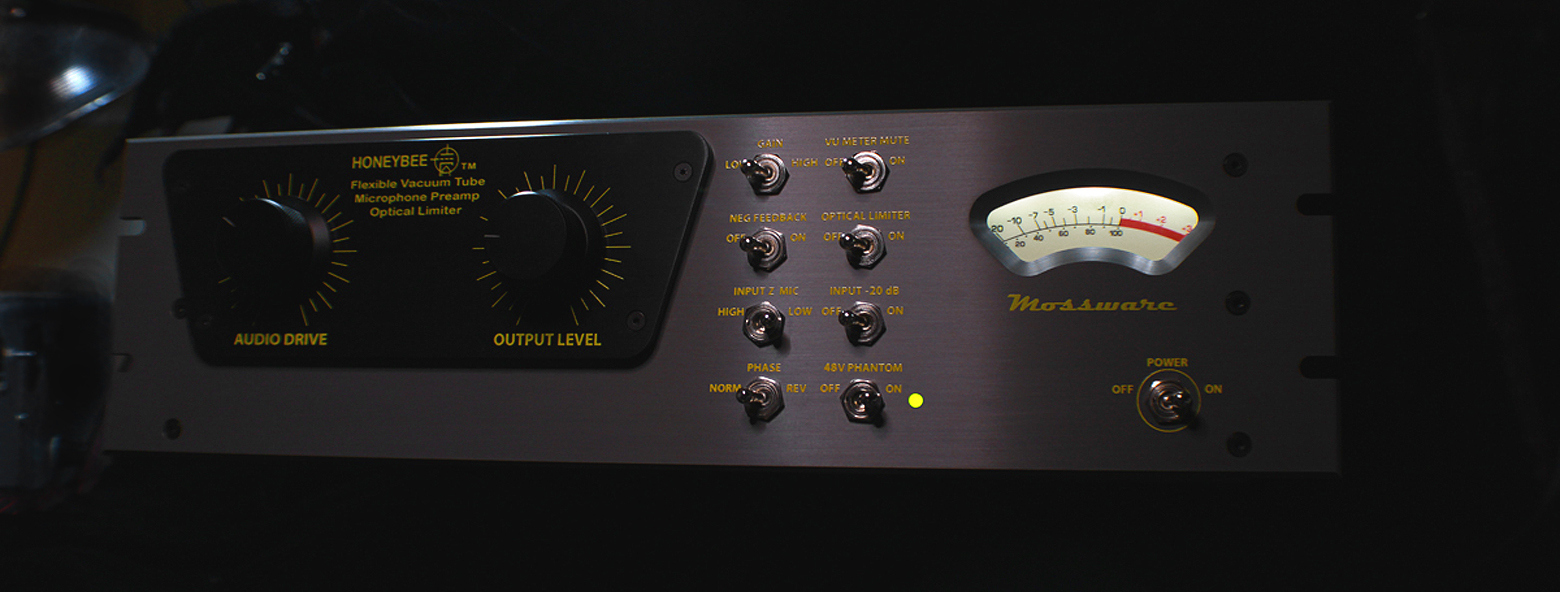
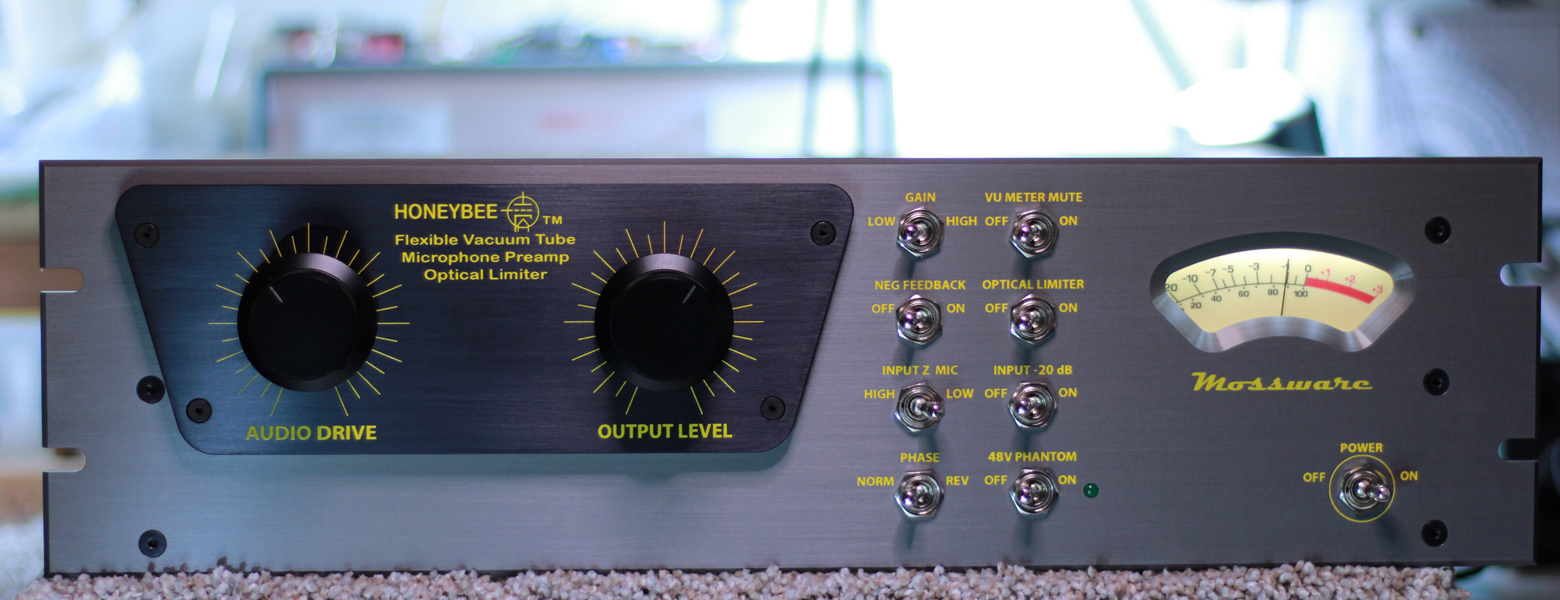
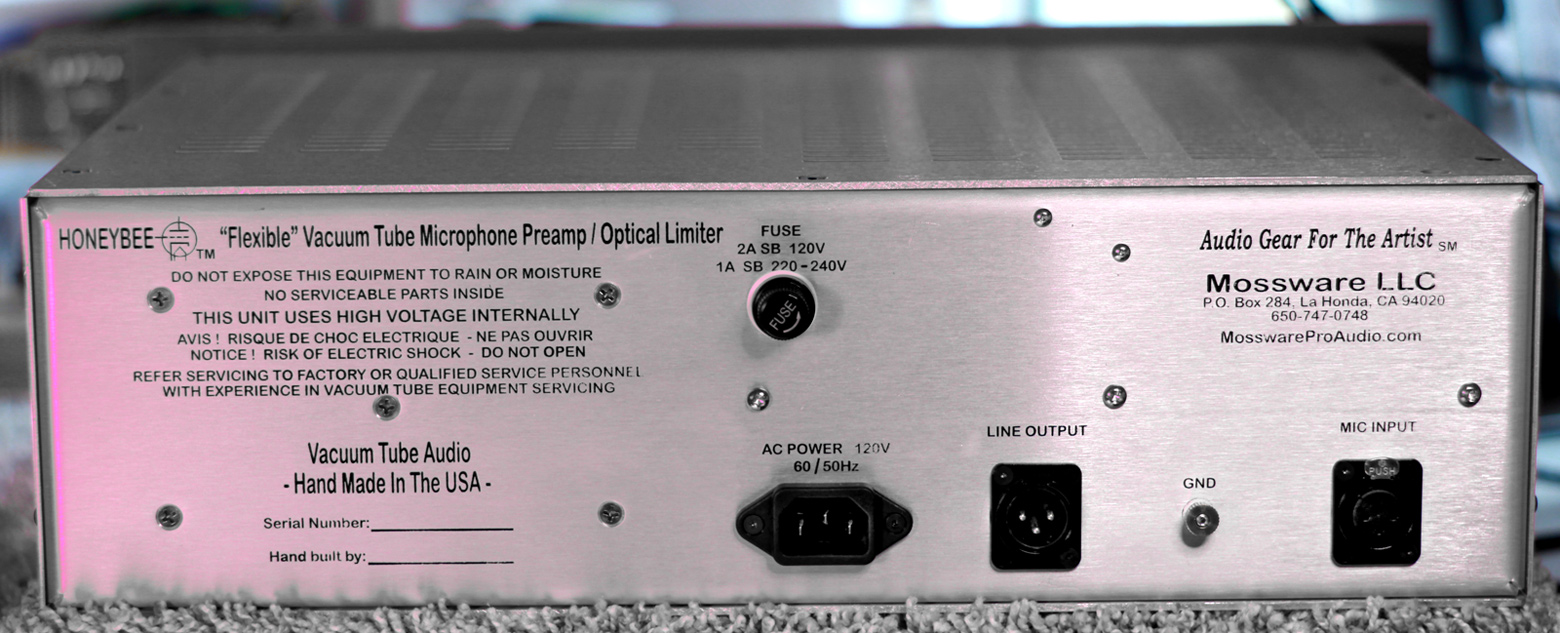
The HoneyBee Pro-Audio Vacuum Tube Mic-Preamp / Optical Limiter is designed to obtain a greater vacuum tube sound if adjusted to do so. The best sound for me was no feedback. Then for better bandwidth specs, I added the option of neg feedback. Then for instruments that have spikes, like finger string noises, squeeks or volume swells that I wanted to record, but needed to have within the window of dynamic range of the other sounds from that instrument I added a fast optical limiter circuit. This is also a type of feedback, swinging feedback, that kicks in when these sound spikes occur. The threshold is set by the user. This is like the Teletronix LA-2A Leveling Amplifier. This is different from conventional neg feedback in that there is no RC time constant involved. Just the output of a stage to the input of a previous stage that shuts down the signal to the input in some way. It is like riding a mixing board fader, only fast.
So here it is in Low Gain
and in High Gain:
1) Straight PreAmp,
2) Neg Feedback PreAmp,
3) Leveling Amplifier PreAmp
Personally, I like 1 or 3. They have that very OPEN
sound. That is why I like the UREI 1176 LN. It also has a very open sound
too.
So you add this to the core vacuum tube mic preamp input
stages and the output drive controls and you have something. This is where the
action is. The vacuum tubes and the input level and output level controls are
what make the sound. They determine where on the amplification slop you are
operating. Then there are the excellent Jensen audio transformers that
condition the sound. Above 2 and 3 are there to allow for special recording
situations or effects.
The HoneyBee Pro-Audio Vacuum Tube Mic-Preamp / Optical Limiter is designed to obtain a greater vacuum tube sound if adjusted to do so. This is the reason for the two knobs. This design has been optimized for flexibility to allow the artist-engineer to seek out that special sound they are trying to achieve. Where other tube mic-preamps will have a committed "SAFE" design with fixed Negative Feedback, the HoneyBee makes things like Negative Feedback, Low / High System Gain, Optical Limiting, Input Drive and Output Level, selectable or adjustable from the front panel. The design intention is to have the Front-Panel-Control feel be more like a compressor.
With No Negative Feedback the sound produced is a Very Open sound. You will know what you are looking for in your sound when you hear it. The point is, it is your choice, your ears, your sound, your recordings. It is a wonderful tool.
We often use the Limiter-ON setting for a much bigger sound. The limiter will allow for the lower volume parts of the performance to be more present in the recording without distorting the louder areas. This is similar to a LA2-A Leveling Amplifier as the HoneyBee also uses optical coupling for its limiting. The difference is that the HoneyBee uses Leveling at a very low signal amplitude without incurring the noise of a bus line level. The HoneyBee uses a much cleaner Limiting circuit designed right inside the preamp area. How hard you hit the limiter is up to you in your search for your particular sound. The harder you drive the Limiter the bigger the sound will get.
Minimum THD+Noise typically measures in the range of 0.02% to 0.05% (20Hz to 20kHz) in final testing if set for low distortion performance. Minimum THD+Noise defines the base-line noise and distortion of the electronics. It is this low value that helps you when you need a super clean clear vacuum tube sound. This can be useful when recording instruments with many strings like a piano or strummed acoustic rhythm guitar. A lot of work went into this feature.
Higher THD can be achieved easily when desired for more vacuum tube color and a fatter sound. Triode vacuum tubes when over-driven will produce the warm even-harmonics which can enrich the texture and body of solo instruments. This is a very desirable sound in the right places. We think High THD contrasted against Low THD can be helpful in creating a contrast between voices in the recordings. That is what modern recording is about, creating an audio landscape. Just like a photographic landscape. I have used Low THD on a acoustic guitar to frame a Higher THD lead instrument like a violin, mandolin, guitar lead or voice. The Low THD on a strummed acoustic guitar helps reduce masking over of lead instruments in the mix.
The HoneyBee Vacuum Tube Mic-Preamp / Optical Limiter, in the 120Vac line setting, is designed to operate "cleanly" from a line voltage of 80Vac to 137Vac. This should cover field recordings where the voltage may dip or rise.
The HoneyBee design uses mil-spec vacuum tubes for the "Entire Audio Path".
This unit also contains its own cooling space built right into the enclosure with no fans. This eliminates the need for adding a 1.75 inch (1RU) vented rack panel between the units for cooling. Those added vented rack panels always result in lost rack space.
I suggest using your favorite mic at the distance and position that works for your particular instrument or voice. Then adjust the HoneyBee to get the sound you want to record. When you get this sound photograph the front panel and the mic setup for future reference. There is an expensive option for step-incremental potentiometers, but that is not necessary if you use your camera to record the front panel settings.
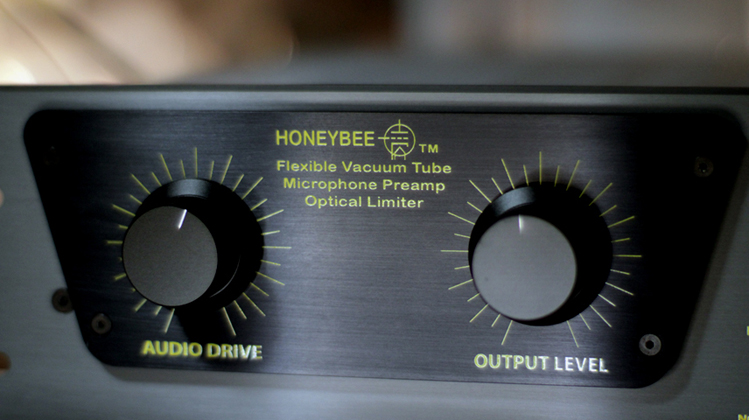
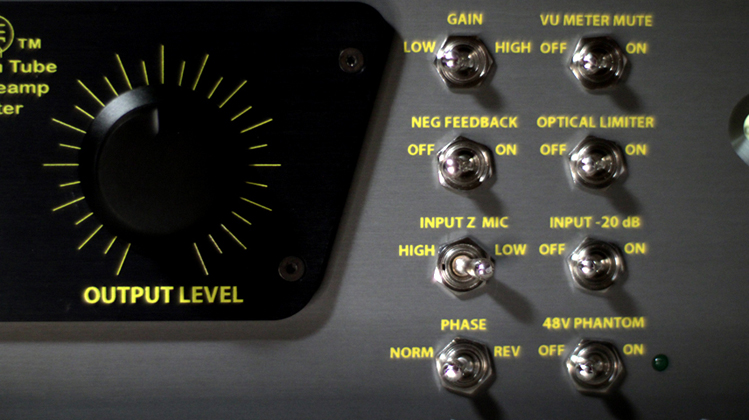
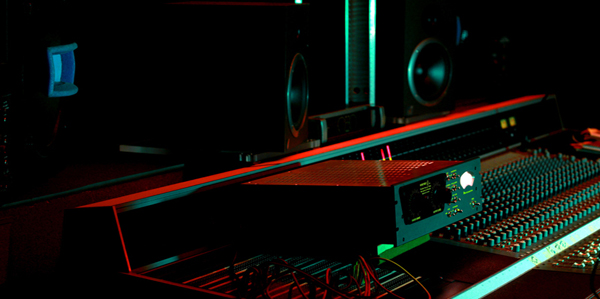
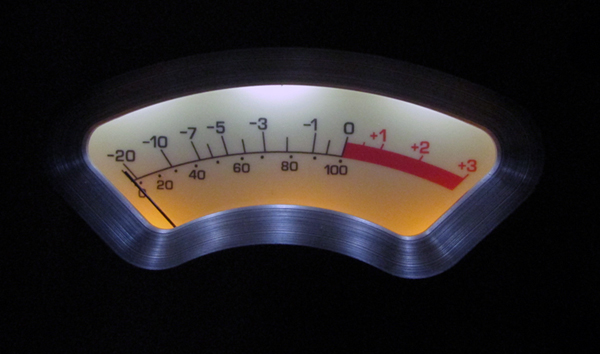
MOSSWARETM
Audio Gear for the Artist
SM
MosswareProAudio.com

MosswareTM is a trademark of Mossware, LLC. All Rights Reserved.
 TM The Honeybee logo is a Trade Mark of Mossware, LLC.
TM The Honeybee logo is a Trade Mark of Mossware, LLC.
Audio Gear For the ArtistSM, MosswareTubePreamps, MosswareProAudio and VacuumTubeProAudio, are service marks of Mossware, LLC.